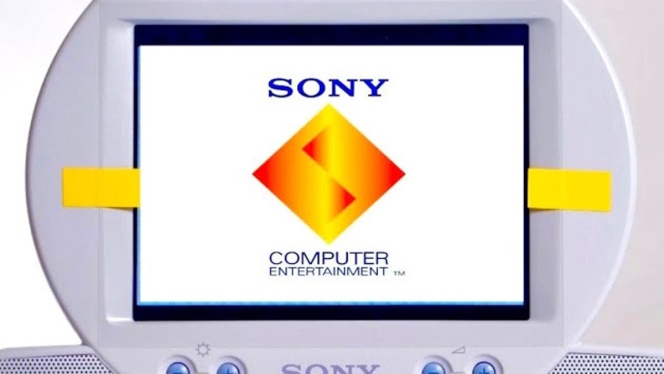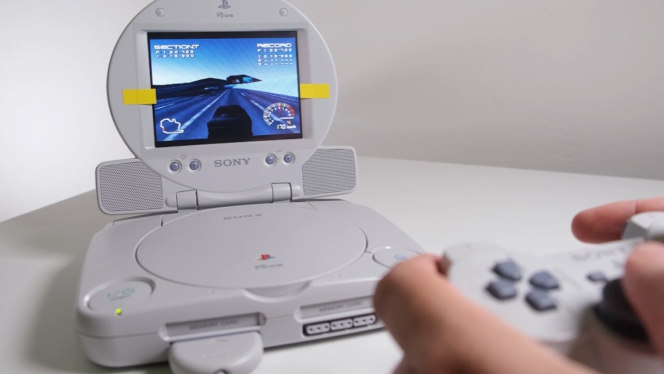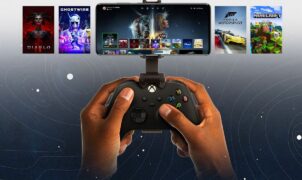TECH NEWS – The first PlayStation “handheld” was not the PSP, but the legendary PS1 (PS One), although few people remember the accessory that made it possible…
It’s well known that when it comes to portable video game consoles, PlayStation made a big splash back in 2004 with the brilliant PSP. This device, which stood out for both its motion sensors and its catalogue of titles, was Sony’s big shot at entering an untapped market.
However, the Japanese conglomerate has been thinking about take-home gaming devices for years; specifically, and surprisingly, the team has been (shyly, it must be said) breaking into this area since the PS1 era.
We all remember the first PS as a legendary console. Its now retro introduction continues to thrill those who have had the opportunity to enjoy its technical prowess through iconic games such as Final Fantasy VII, Metal Gear Solid or various installments of the Crash Bandicoot saga. But in addition to our fond memories of the machine, it is also worth noting that the PS1 was a device that had many revisions. Over the years, Sony has ironed out hardware issues and reduced production costs with subsequent versions that have occasionally featured notable visual redesigns. This decision gave birth to models such as the PS One. The latter was significantly smaller compared to the original release. With this alternative, along with a never-before-seen accessory from the company, the community got a chance to try out the Japanese company’s first attempt at a portable device.
PlayStation takes the first step towards portability
Back in 2002, Sony surprised its fans with a peripheral that turned the PlayStation console into a kind of single-screen Nintendo DS. This idea was also marketed with a PS One bundle that already had the accessory installed. To give you a sense of the concept, and as demonstrated by content creator Dead Pixel in a YouTube video (see the end of this article), it was an LCD monitor with built-in speakers. This had to be opened or unzipped by snapping the top of the PS One to play games.
However, unlike Nintendo’s legendary handheld console, the PlayStation proposal was not intended as a direct handheld device; the machine had to be placed on a surface and could only be interacted with using the DualShock controller.
Obviously, it wasn’t an ideal device in terms of usability. While it’s true that its “portable” approach caught the attention of some gamers, the novel screen was far from perfect. In short, the visual experience was made somewhat uncomfortable by the monitor’s small size (5 inches – approx. 13 cm). This made it especially difficult to read dialogue in video games. In addition, the colours were not as sharp as on a traditional television of the time.
However, PlayStation didn’t create this device to revolutionize displays, but to enter the handheld console market for the first time. However, there was a bit of a cheat with this term: the PS One with the monitor and speakers had to be connected to the network for it to work. So, for example, it could not be used in the middle of the forest. Why do we use the word “portable” throughout the article? Precisely because Sony emphasized this feature when talking about its gaming console. In news reports at the time, such as a report in a 2002 issue of CNET, the team talked about a device that would “allow gamers to play on the go without having to connect to a TV.” A few manufacturers had already released similar accessories, all contributing to Sony’s plans. , to turn your PS One into a portable gaming machine.
How was the PS One competitive?
Those who are familiar with PlayStation’s history must have noticed that this PS One and LCD screen accessory/bundle was launched when the popular PlayStation 2, released in 2000, had completely lost its footing in the market. Why did they decide to extend the life of an old-generation device?
It turns out that while the second foray into the console market saw unprecedented commercial performance, the PS1 (and its revisions) still sold very well.
Finally, and with the market still accepting next-gen consoles, many gamers decided to buy a PS1 to take advantage of its reduced price compared to the (era) PS2 and its catalogue of video games. Therefore, Sony executives decided to keep the PS1 on the market to capitalize on its appeal; this was supplemented by peripherals and initiatives such as the one discussed in this text. With this gamble, the Japanese team had the opportunity to tap into a new vein for gamers who wanted to have fun with a “portable” device.
In fact, this last term can give rise to various disputes. Especially if we consider that the machine must be plugged into the network. However, we can all agree that this PS One paved the way for the later PSP. After all, beyond its concept, the device was discontinued in 2004, the year when the PlayStation finally jumped into the pool of 100% portable devices with the PSP. And today, this particular screen console has established itself as one of the most important pieces of video game history.

















Leave a Reply